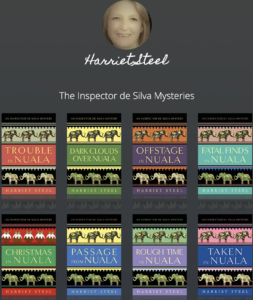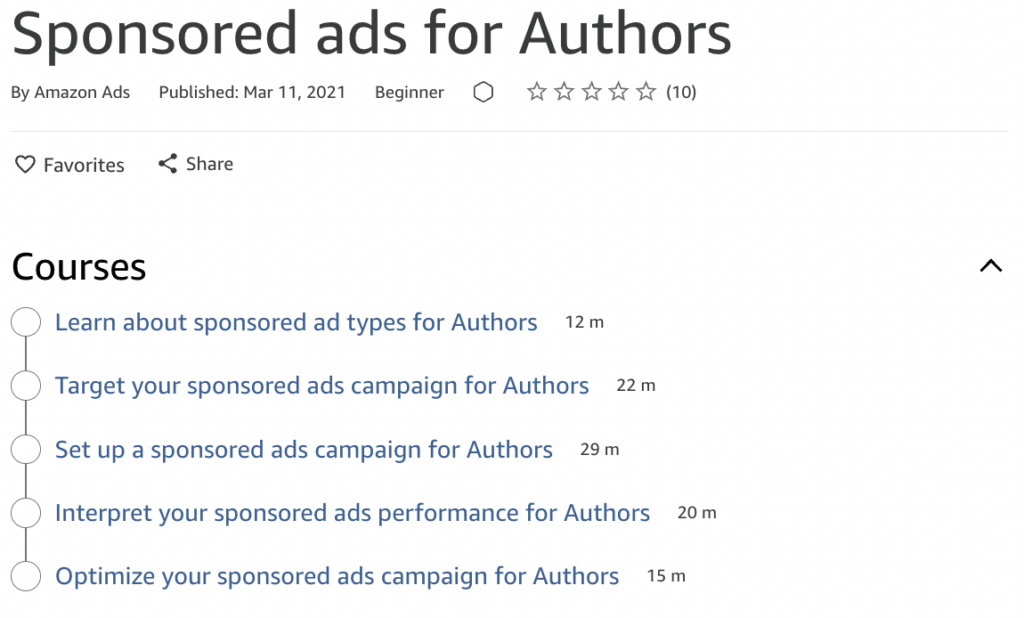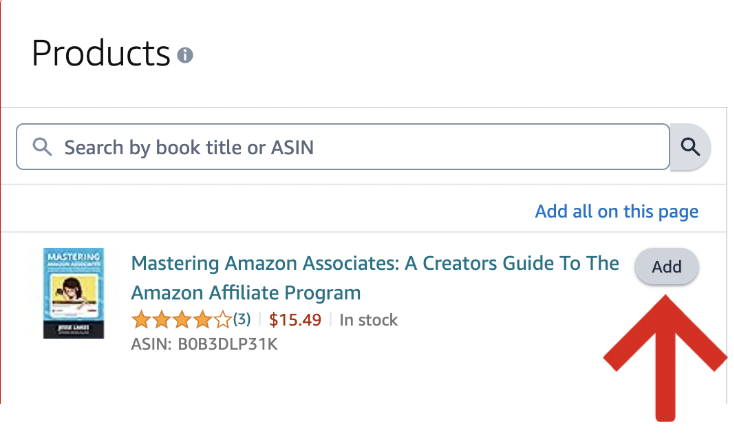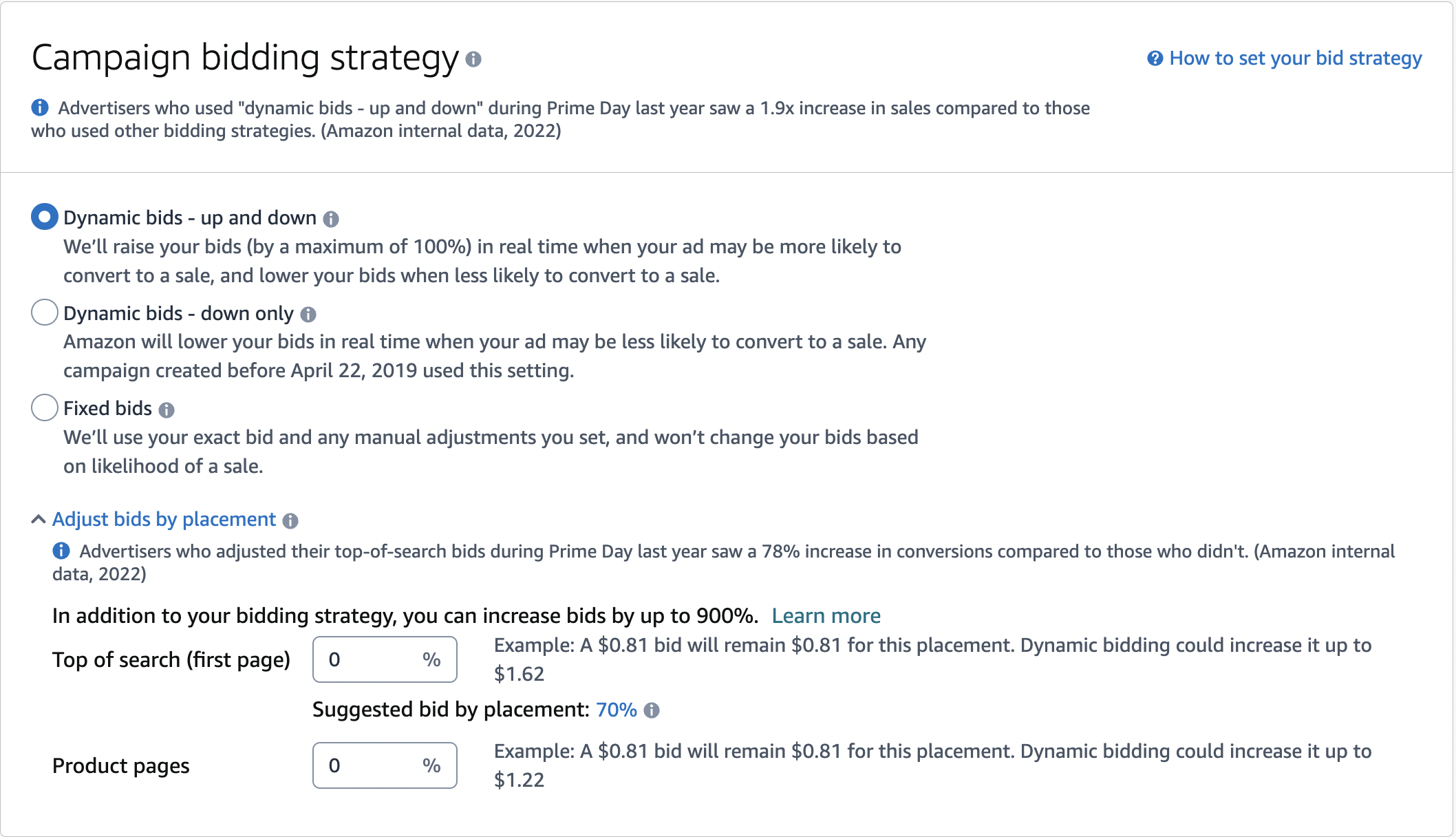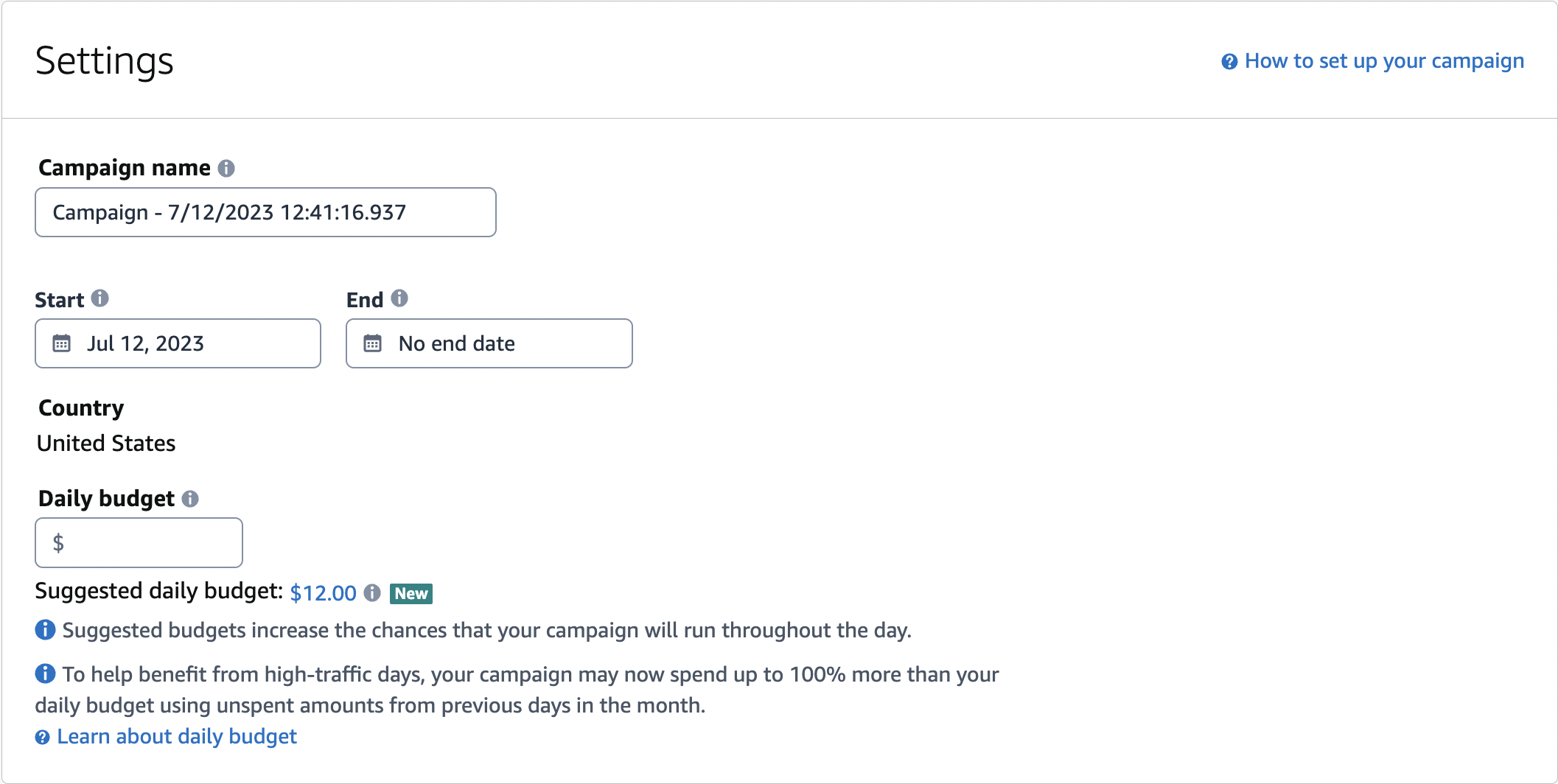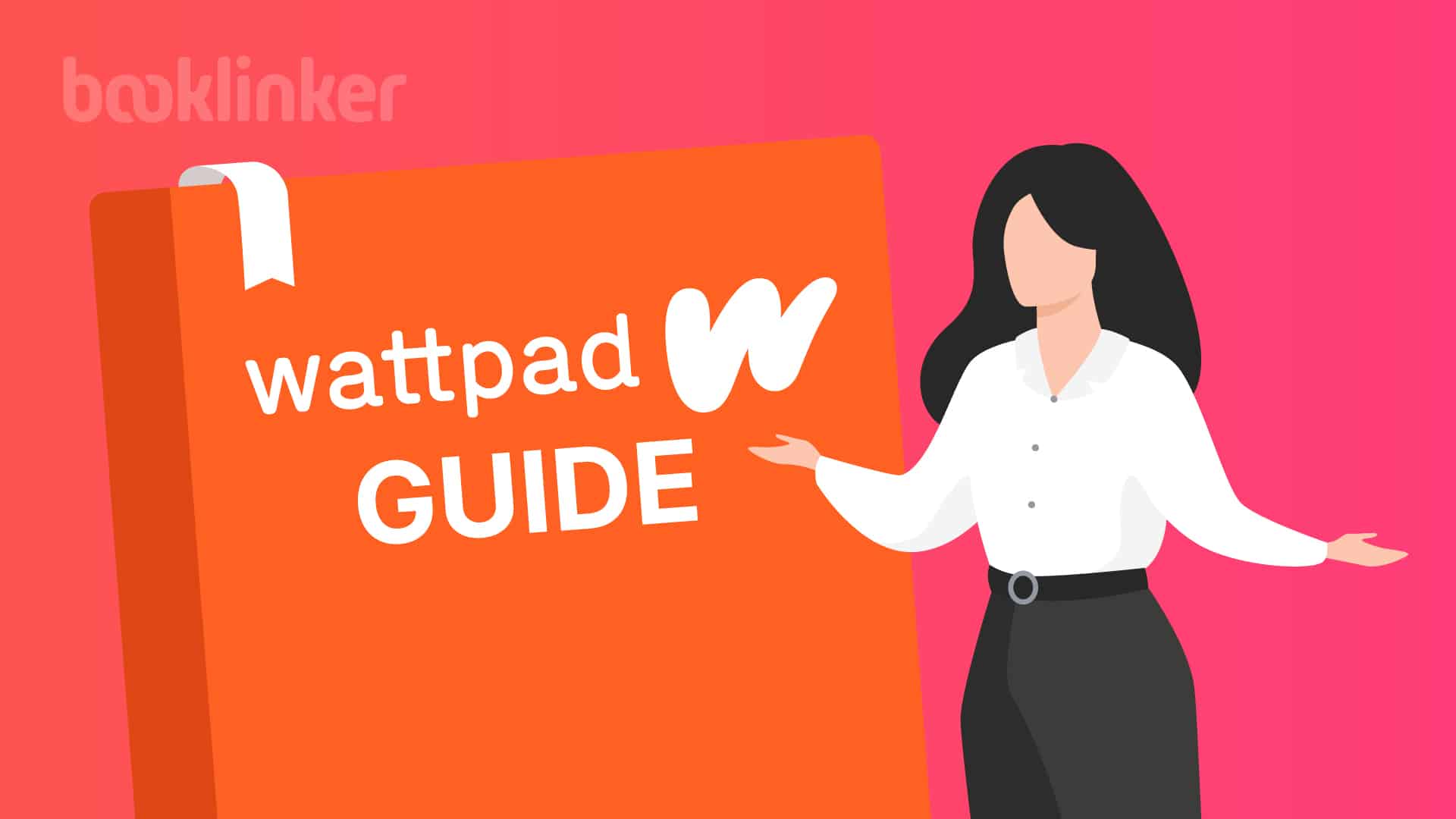Amazon ads are one of the most powerful book marketing tools out there, placing your book in front of audiences that already know they want to buy their next book.
That being said, for a new author, the idea of throwing money at a marketing channel that may or may not return your investment is a scary thought.
The Booklinker team reached out to Harriet Steel, author of the highly praised Inspector De Silva Mysteries, who has been running Amazon Ad campaigns for five years, helping to generate over two hundred thousand sales.
In this guide, we’ll cover:
- What type of author Amazon Ads are for
- Why run Amazon Ads
- Pros and Cons of Amazon Ads
- Amazon Ad Profitability Factors
- Amazon Ad Bidding Strategy
- Amazon Ad Metrics
- Types of Amazon Ads
- Frequently Asked Questions
- And more!
Let’s jump right into our guide on Amazon Ads for authors!
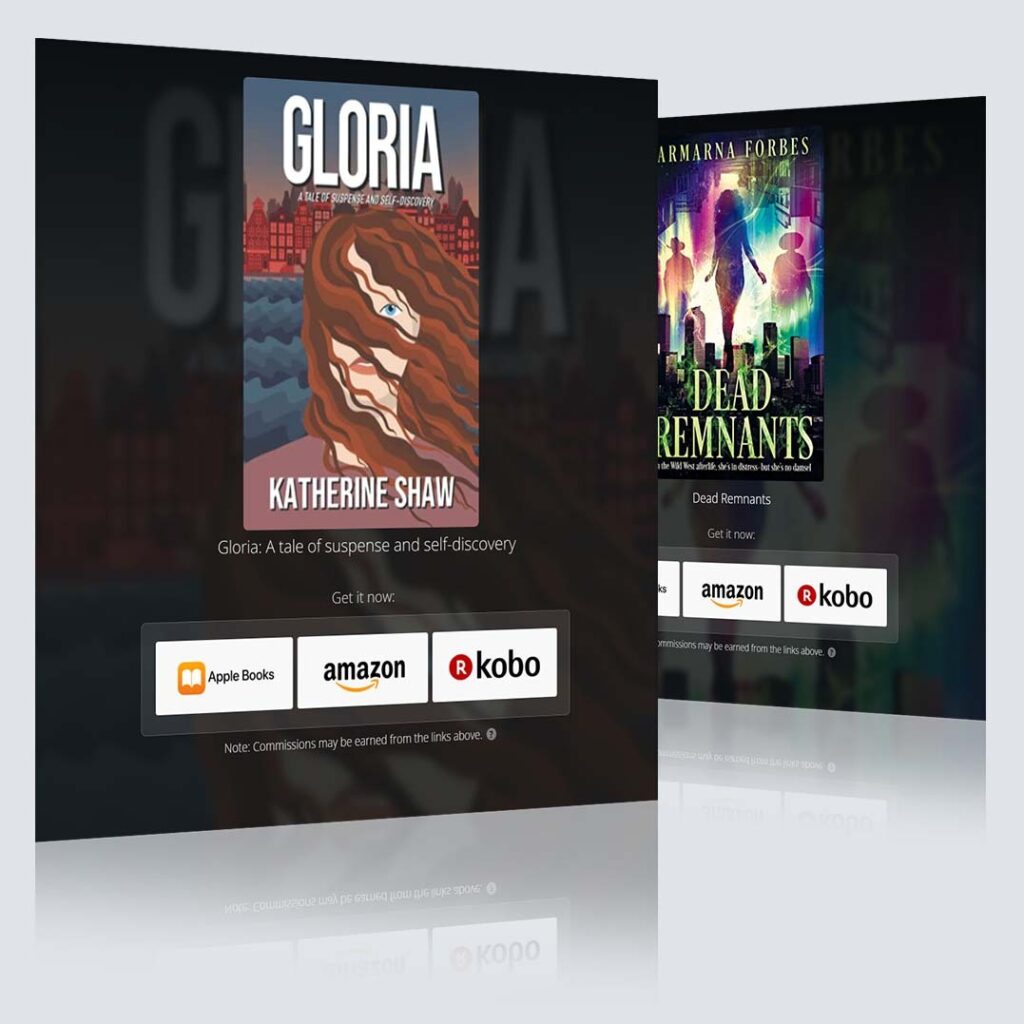
Free Universal Book Links
- Boost international sales by geotargeting readers
- Book store links update automatically based on availability
- Advanced marketing analytics
- Increase clicks with trusted links
Why Run Amazon Ads as Opposed to a Different Channel?
Running ads on Amazon is not mutually exclusive to other channels. That being said, as self-published authors we have a lot of calls on our time, and it’s desirable to prioritize the highest-leverage tasks available.
Below, we’ll jump into some of the main reasons why an author would want to focus on Amazon ads before looking at other book marketing channels.
It’s Where People Buy Books
The first reason to run Amazon Ads as opposed to ads on other channels is that Amazon is where many readers buy books these days. I was unable to find a reliable statistical source, but it’s estimated they have over 60%-70% of the book sale market.
On top of Amazon’s market share dominance, a reader browsing Amazon has already made up their mind that they’re interested in buying their next book.
Compare this to social media, where whether we’re speaking organic or paid acquisition, the intent of a reader may be different. Perhaps readers on these platforms just want to be distracted for a while or view family photos.
They Improve Your Organic Ranking
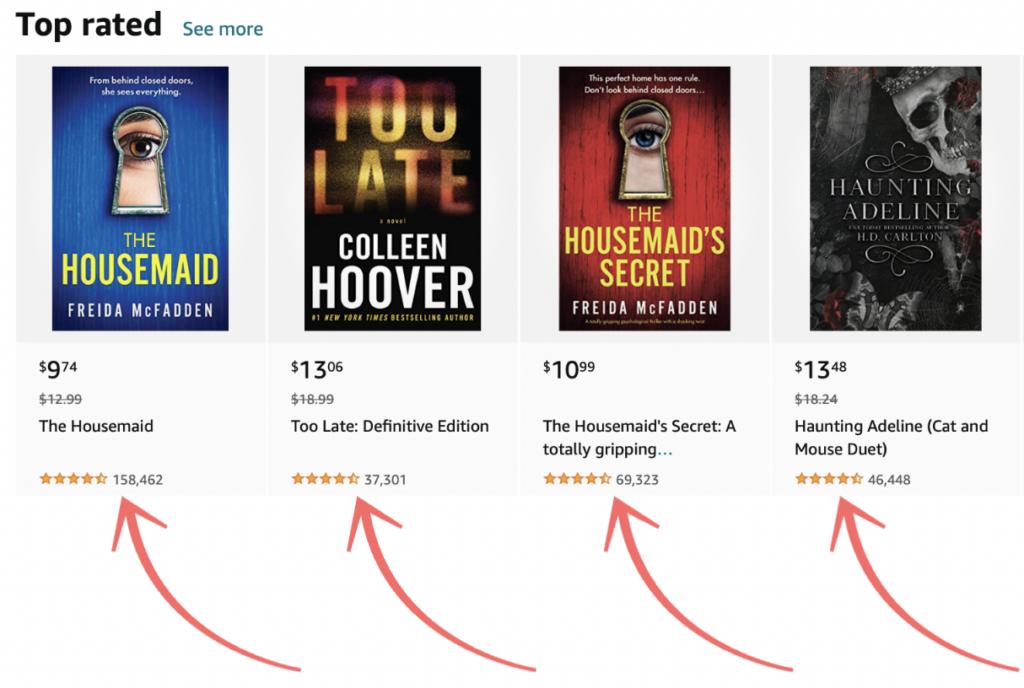
The next reason why Amazon is a great place for authors to run ads is that sales on Amazon (and reviews) are an organic ranking factor on the platform.
Assuming your ads perform well and lead to sales and book reviews, they will greatly increase your organic discovery.
Pay-Per-Click Only

Another benefit of running ads on Amazon is that the platform charges via a pay-per-click model.
Compare this to other platforms that make you pay per impression.
It’s hard to quantify the value of an impression as these may be low down on a product page and rarely noticed.
You Don’t Need Creatives

Amazon Ads provide a quick and easy marketing strategy, within minutes you can set up a campaign with no need to provide your own creatives.
Amazon will simply use your book cover. The US site does allow users to choose between a standard ads model or a customized one but I suggest beginning with the standard model unless you have experience in writing advertising copy.
Flexible and Small-budget Friendly
Amazon is also more forgiving to beginner advertisers as you can start campaigns with budgets as low as $1 per day (although this is not recommended).
Even if a higher budget is set, Amazon won’t always spend the maximum allocation you set, so your spending might be less.
If you’re becoming worried that you’re spending too much, you can just pause the ad campaign for a few days. Amazon will pause your campaign if it runs out of budget.
On the other side of the coin, you can very quickly increase your budget if the campaign is going well.
Endless Education
The final reason why Amazon Ads make a lot of sense for beginners is the enormous amount of support and education that Amazon offers to its advertisers.
Amazon wants its authors and advertisers to succeed on the platform. If you make money, they make money. If you’re just getting started, these resources are a great place to learn.
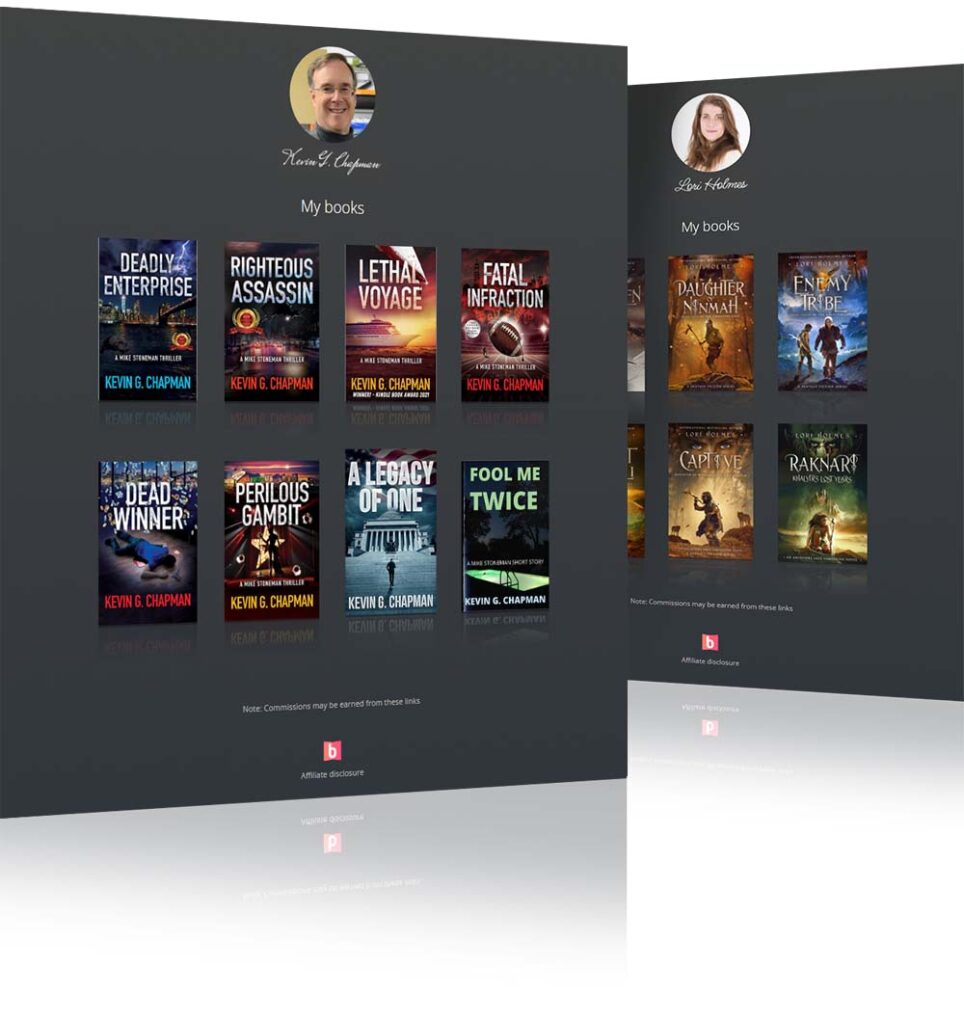
Introducing:
Booklinker Collections
One landing page for all your books. 100% free.
One link for easy sharing of your books across your backmatter, websites, emails, and social media.
Why an Author Shouldn’t Run Amazon Ads
Obviously, Amazon Ads aren’t for everyone, right?
Here are a few reasons why authors shouldn’t start running them right away.
They Only Have One Book Out
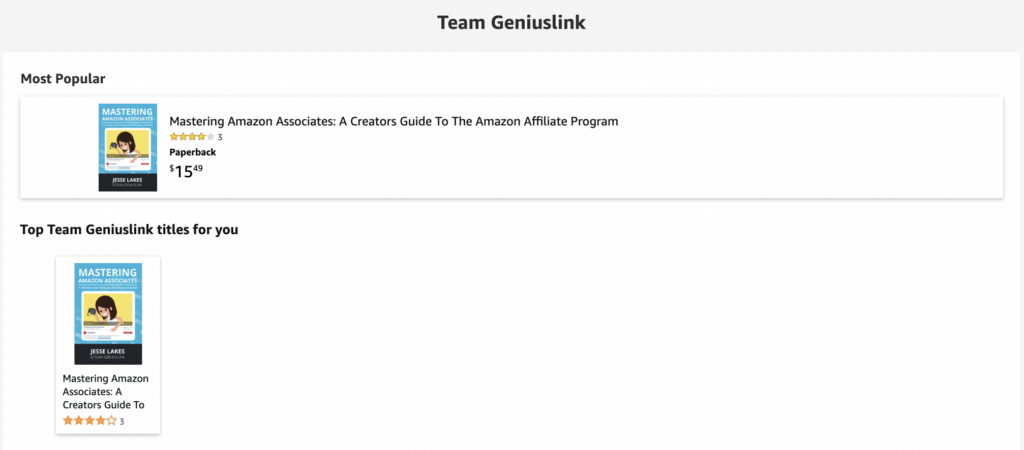
Whilst Amazon Ads are a powerful marketing channel, I wouldn’t advise an author to run them until they have two or preferably three books published.
If you start running ads when you only have one book to your name, you may be one of the very lucky people who have a runaway success and the world waiting breathlessly for their next book, but that happens very infrequently.
Ideally, after an Amazon Ad successfully brings you a new reader who loves your book, you will have follow-up material for them to go on to, increasing the benefit of what you’ve spent on your ad. In my case, my Inspector de Silva series now contains 13 books.
On the other hand, if your current goal is just to experiment and learn a bit, there’s no harm in investing a small amount of money to see what happens, but don’t count on a significant return on your investment.
Learning Curve
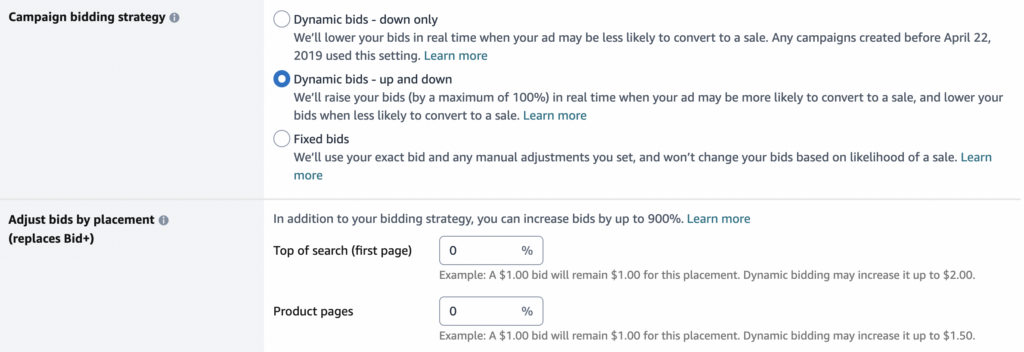
Although not difficult, Amazon Ads, like those on any other platform, take time to create and monitor.
If there are higher ROI tasks that you can do as a self-published author, for example, getting that next book that’s almost finished polished up and published, then it may make sense to defer your venture into Amazon Ads for a while.
There’s a lot of truth in the saying that if you want to sell more books, write more books.
Amazon Ad Campaign Profitability Factors
Next, we’ll jump into all of the factors that go into deciding the profitability of an Amazon Ad campaign.
Bidding
An important factor in achieving ad profitability is your bidding technique. Anytime a search is executed on Amazon, a live auction takes place based on all the relevant advertisers’ bids.
The two main levels of customization here are the base bid amount and the bidding strategy.
As far as the base bid amount is concerned, I usually go with what Amazon recommends.
However, the higher your base bid is, the higher the chance that your ad will be shown closer to the top on Amazon’s pages.
Here comes the trickier part.
You’re then asked to choose from the following strategies:
- Fixed Bids – You only pay the base bid amount you selected
- Dynamic Bids – Down Only: You pay the base bid at the maximum, scaling down when Amazon determines your ad is less likely to turn into a sale.
- Dynamic Bids – Up and Down: On average, you pay the base bid, with the ability for it to increase by up to 100% in the event the algorithm detects a likely sale, as well as the ability to flex down.
If you’re on a tight budget and concerned with blasting through it, then dynamic bidding-down only might be your best bet.
Conversion Rate of Traffic Hitting Product Page
Other important factors that influence the profitability of your Amazon ads are ones that authors have a lot of control over.
They are:
- Your book’s price – Make sure that your price is in-line with what readers expect for the genre and length of your book.
- Your book cover – A book’s cover is the thing people see first and the importance of having a good one can’t be overstated. It should be eye-catching and have design elements that hint towards the genre.
- Your Amazon book description – Amazon book descriptions are your marketing copy, It’s wise to put a lot of thought into crafting this so it will help you to achieve good sales.
- Your book reviews – The more book reviews you have, and the higher the rating, the more credible your book appears in the eyes of a reader.
Targeting
The right targeting is crucial for the success of an Amazon Ad.
There are two ways of doing it:
- Automatic Targeting – where Amazon picks where your ad is shown
- Manual Targeting – where you specify keywords and other authors to direct the Amazon pages where your ad will come up.
I’ll talk more about this later.
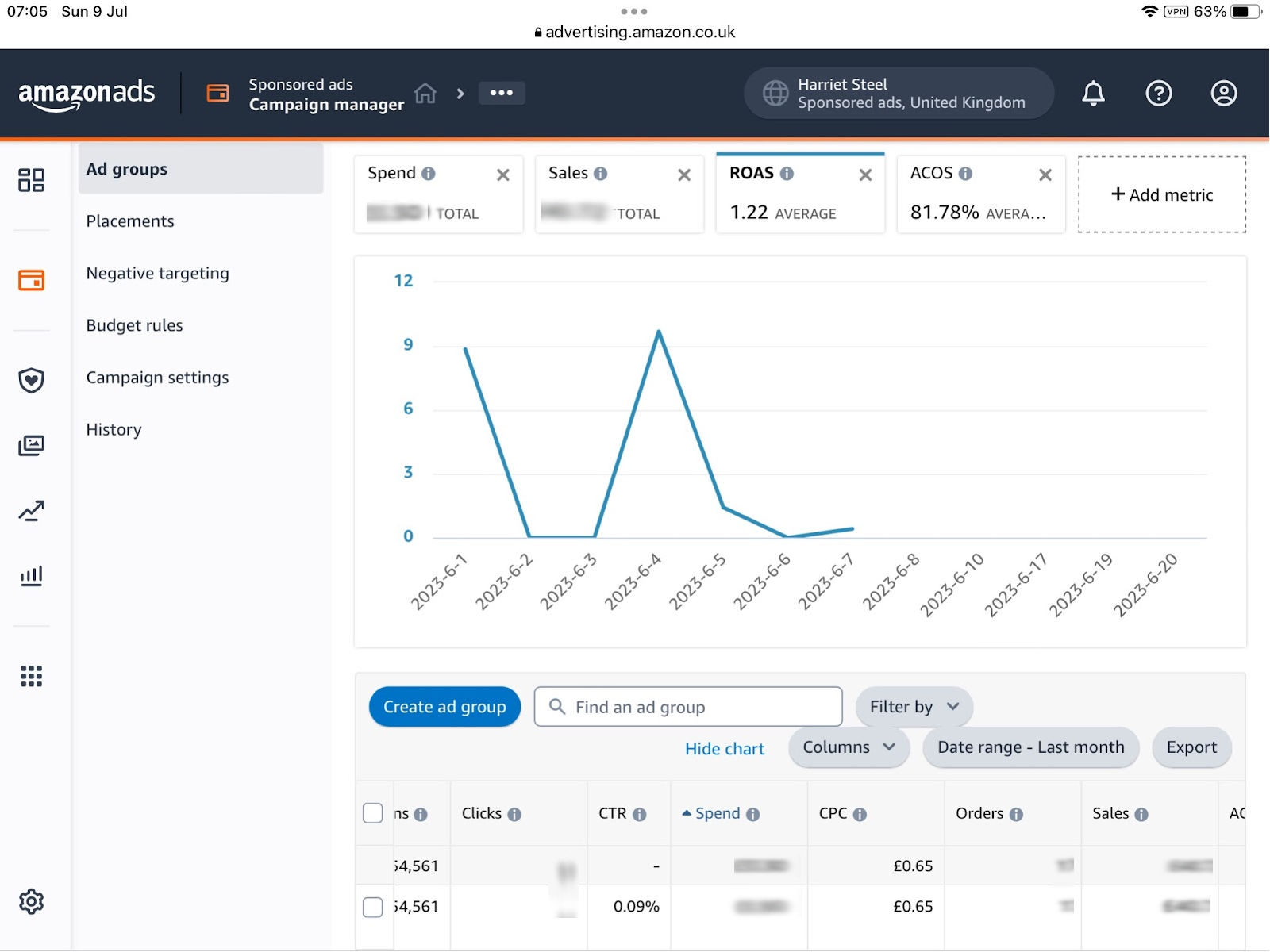
Amazon Ad Metrics
Cost Per Click (CPC)
Click-Through Rate (CTR)
Click-Through Rate is expressed as a percentage and is calculated by taking the total number of clicks and dividing it by the number of impressions, (the number of times your ad was shown on Amazon) then multiplying by a hundred.
If your ad was shown 1000 times and received 15 clicks, you would have a 1.5% CTR.
If your CTR drops below 0.5%, I’d advise considering whether you should bid a little more for a higher placement or whether your book cover could be made more inviting.
ROAS (Return on Ad Spend) & ACOS (Advertising Cost of Sale)
Amazon gives you two means of gauging how profitable your campaign is: ACOS and ROAS.
Basically, they come to the same thing, but ACOS (advertising cost of sales) is calculated by dividing your total spend on advertising by your total sales and expressing it as a percentage. If you spend $10 on ads and achieve $50 on sales, your ACOS will be 20%.
ROAS (return on advertising spend) is determined by dividing your total sales revenue by your advertising expenditure.
For example, if you spend $10 on ads and achieve $50 in sales, your ROAS will be 5.
ACOS serves as a clear indicator of the profitability of your advertising efforts, with a low ACOS being desirable.
ROAS does the same thing but you want the figure to be high, somewhere between 3 and 5 is good.
It’s essential to know that ACOS is measured against the price of the Kindle or paperback book, not against the royalties you get.
So, say you are on a 70% royalty, you want your ACOS to be below 70% to make any profit. I’d be happy with an ACOS of 45% – 50%, especially if I have evidence of follow-on sales.
It’s worth mentioning Kindle Unlimited sales here.
The UK site doesn’t provide any information about the number of Kindle Edition Normalised Pages (KENP) read in response to an ad, but the US site does, using a window of 14 days after a reader clicks your ad to calculate the numbers.
The information helps you to see more clearly how well your ad is performing although you may not know the exact amount that those pages read have earned you until the end of the month.
Generally, it’s worth keeping an eye on your dashboard too. A spike in sales may mean that your ad has achieved follow-on sales for you.

Introducing:
Booklinker Collections
One landing page for all your books. 100% free.
One link for easy sharing of your books across your backmatter, websites, emails, and social media.
Types of Amazon Ads
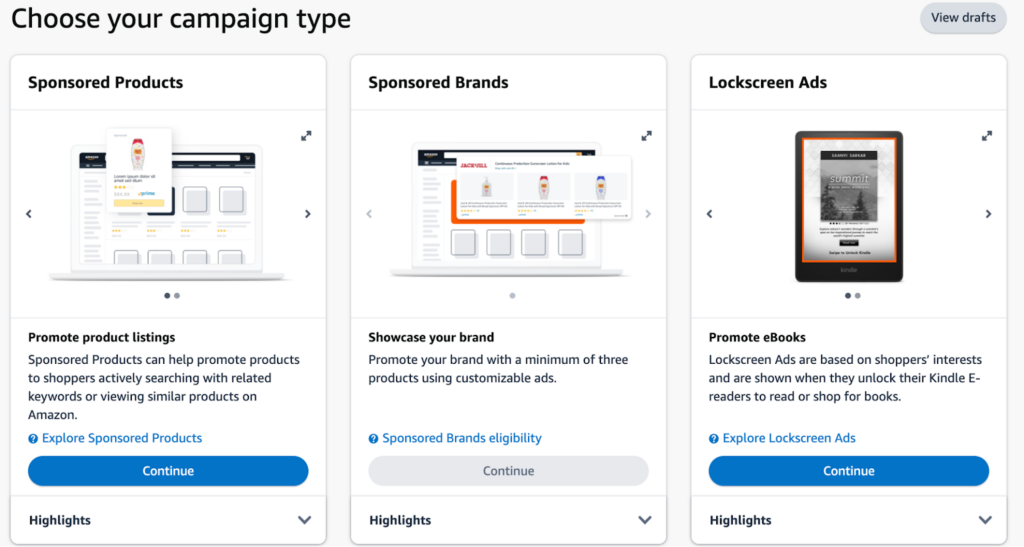
The three main types of Amazon Ads are:
- Sponsored Product Ads
- Sponsored Brands Ads
- Lockscreen Ads
Below, I’ll deep dive into each ad type, and let you know which type of ad is best for each situation.
Sponsored Product
Let’s start out by taking a look at sponsored product ads.
These ads work off a Pay-Per-Click Model (PPC) and show when shoppers are searching for similar keywords or products to yours.
Below, when searching for the book Atomic Habits, the #2 and #3 positions on the page are sponsored product ads.
In this case, the books expand upon Atomic Habits material, making them potential strong candidates to show.
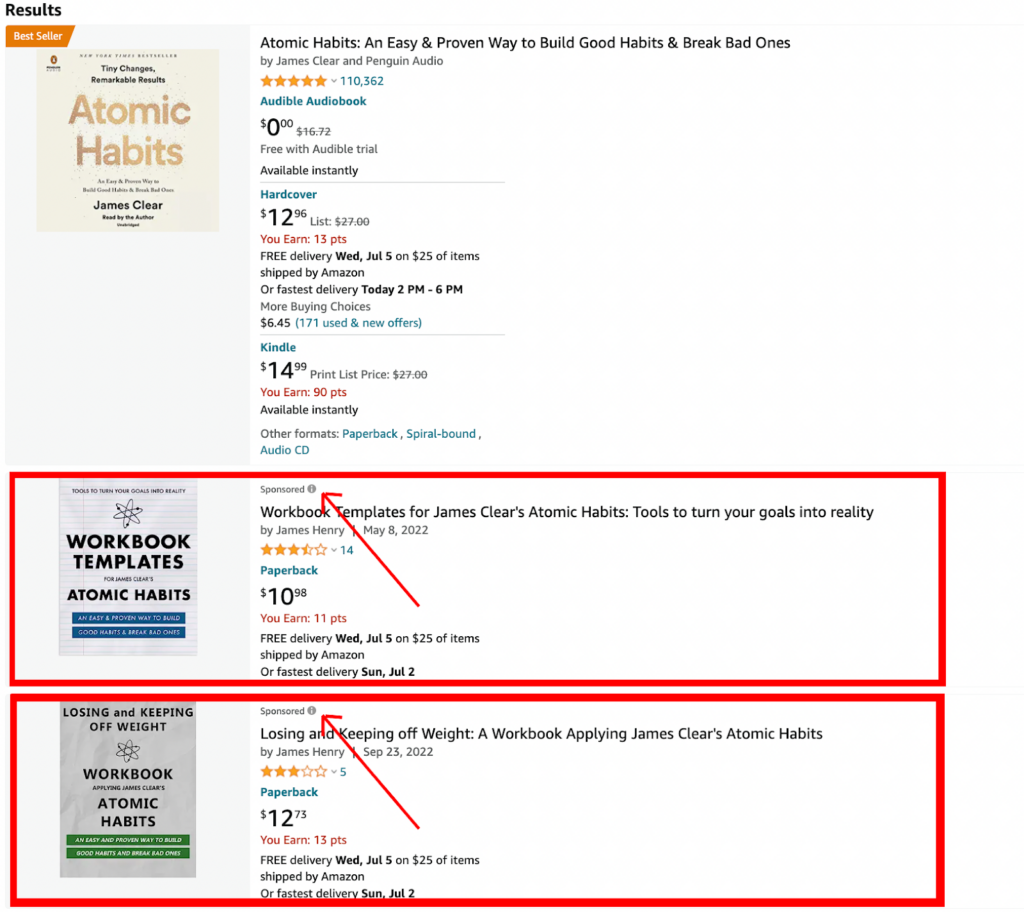
Sponsored Brands Ads
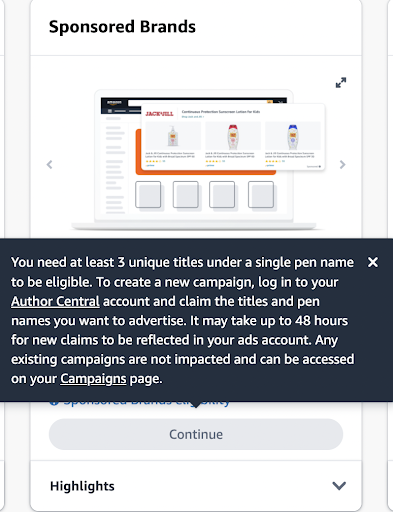
Sponsored brand ads also go by a Pay-Per-Click model, and require at least three books in order to create a campaign.
These types of ads also display on Amazon search results pages and product pages for related brands and keywords.
For example, in the case below, I searched “Twilight” and a sponsored brand ad for Hunger Games showed up, with the three books in the series.
This is because Amazon’s ad engine determined a reader interested in Twilight would also potentially be interested in The Hunger Games Series.

Lockscreen ads
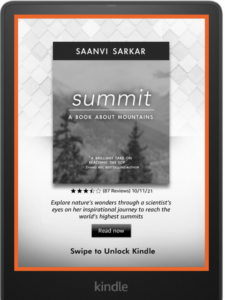
The last type of Amazon ad we’ll speak about is lockscreen ads.
To be honest, I suspect many people swipe straight past lock screen ads. I’ve tried them and didn’t notice a significant improvement in sales.
I’m not sure how many people see the ads in color, and in black and white, they don’t look particularly striking.
How to Create an Amazon Ad Campaign
Next, I’m going to walk you through creating an Amazon Ad campaign from start to finish.
Keep in mind this might look a little bit different on your end depending on when you see this, and what country you’re from.
In order to create an Amazon ad campaign, go into your KDP account and click on the marketing tab.

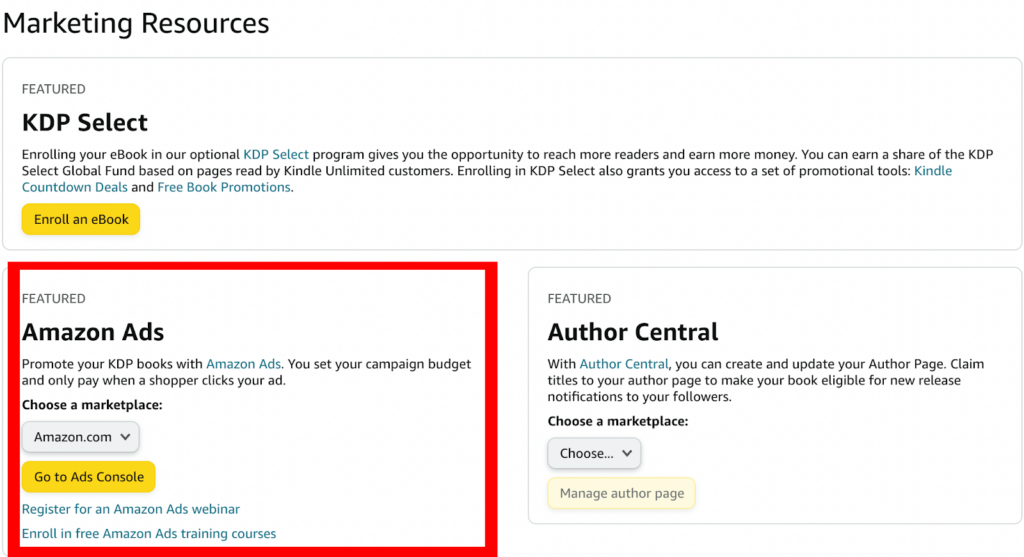
After selecting which region you’d like to run ads in, click on Go to Ads Console.
You’ll first be prompted to accept Amazon’s Terms and Conditions and then to add a payment method.
On the next screen, you’ll be prompted to choose a campaign type.
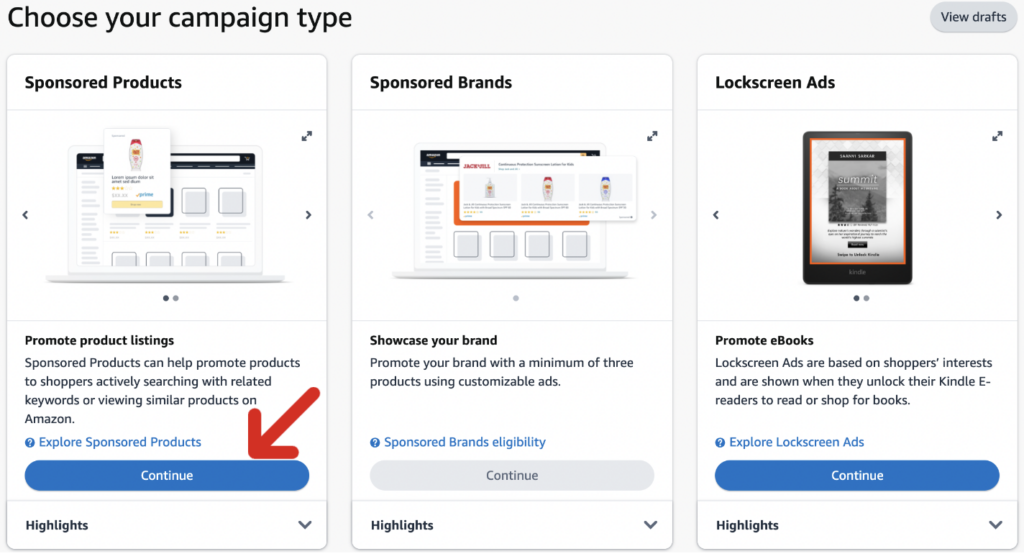
For this example, select Sponsored Products and click continue.
You’ll first be asked if you’d like to do a Standard ad or a Custom text ad. Because this is a beginner guide, we’re going to select Standard.
You’ll then be prompted to name your Ad Group. Think of these as an organizational tool, where a series of similar ads can be placed inside one bucket.
As far as naming conventions go, it’s common to mention the product name, campaign types, and targeting methods in a clean, and scannable format.
Next, choose the products that you want to advertise, searching by book title or ASIN.
Now it’s time to decide how you want to target your ad.
I suggest letting Amazon do the choosing for you and going for Automatic Targeting at this stage, using the default bid.
When you feel more confident, you might like to try manual targeting.
I suggest you leave Negative Targeting for later when you’re a little more familiar with Amazon Ads, but the idea here is that you can specify keywords and products that you don’t want your ads to show for.
Next comes your Campaign Bidding Strategy, which we spoke about above.
I suggest staying with fixed or down-only bids to start with.
Give your campaign a name and a start date. (The end date is optional but might work for you if you only want to advertise around the time of the launch of a new book).
Next, you’ll be asked to put in a figure for your daily budget.
Nowadays most people start with at least $10 but you can go lower.
Amazon recently introduced a new setting for increasing your daily budget on high-traffic days, stealing it from the unspent budget of previous days.
This should take you to the point of running your first automatic campaign.
Don’t be disappointed, if you don’t see instant results. A campaign usually takes a week or two to settle in.
Please let me know how your campaign does in the comment section.

Introducing:
Booklinker Collections
One landing page for all your books. 100% free.
One link for easy sharing of your books across your backmatter, websites, emails, and social media.
Frequently Asked Questions
How do you know if an Amazon ad campaign is truly profitable?
As mentioned earlier, an ACOS of 70% indicates that you’re breaking even but for a good profit you want it to be considerably lower. If you’re looking at the ROAS figure, ideally, you want this to be 3 and upwards.
What should an author do if their ads are not profitable?
Assuming your Amazon Ads aren’t profitable, the first thing I would do is look at your bidding and consider revising it upwards.
It may also help if you spruce up your cover. If you’ve used Amazon’s cover creator to design your cover, consider using a professional designer.
I’ve found that it’s well worth the investment and doesn’t have to cost a huge amount. You’ve spent a lot of time on that book so send it out into the world looking good.
Look at your book description. Is it interesting and compelling or could you make it more so?
Check the price you’re charging to make sure it’s competitive.
You might also try to get more reviews by contacting book bloggers or review services.
Book bloggers usually review for free and you only need to provide a copy.
If you’re still having no success, it may be best to drop Amazon advertising for the moment and concentrate your efforts elsewhere, for example on using one of the paid newsletter promotions available.
Are there any other additional software tools that you use when running Amazon ads?
There are a variety of tools out there that can aid you in your Amazon Ad efforts. KindleTrends is a market research newsletter that sends out a weekly report full of data surrounding the Kindle Store.
Examples of the data mentioned are:
- Percentage of books in a genre that are standalone vs series
- Percentage of books that are in KU vs Wide
- Percentage of books that are self-published vs traditionally published
PublisherRocket is another market research tool by the Kindleprenuer Team.
It’s a bit more interactive than KindleTrends as it’s actually a piece of software that you can jump into.
Below are some of the ways that PublisherRocket can help you as an author:

Do you need Amazon Author Central?
Another common question that’s asked is if an Amazon Author Central page is needed to run Amazon Ads.
An Author Central page is by no means required for you to run ads, but can potentially increase your ad’s conversion rate.
Think about it, it’s a place where potential readers can go in order to learn more about an author.
The most successful authors build strong connections with their reader base, and an Author Central page is a great place to do that.
I always find it disappointing when I click on an author’s name and find no extra information about them, just a list of their other books.
Should New Authors Hire an Ad Agency or a Done-for-you Amazon Ad Service?
Many new authors wonder if they should hire a service to run their Amazon Ads for them.
Unfortunately, due to the limited margins available, it doesn’t make much sense for a new author to hire an ad service.
Any net ROI would probably just go straight to the agency, leaving little to nothing left for the author.
I find that with 13 books in the Inspector de Silva series, I can manage my ads myself, but I would, however, suggest that you consider outsourcing your Amazon Ad campaigns if you are a prolific author with say 50+ books, particularly if you write under many different pen names.
In that case, it might be too difficult and time-consuming to successfully manage all the campaigns yourself.
How Do I go About Doing Manual Targetting?
In order to decide on the authors whose books might mesh well with yours, so that adverts appearing on their pages will hopefully attract new readers to your books, you can use your knowledge of other successful authors in your genre and in addition look at the Also Bought on their pages.
These can help you to find authors you hadn’t thought of. You can also list relevant keywords. For example, if you’ve written a romance set in Cornwall, you might try Cornish romance.
A word of caution, if you decide to attempt manual targeting, don’t try to list every single possible “relevant” author or keyword.
Fewer accurate keywords and authors are better than many only vaguely accurate ones. I recommend around 25 keywords maximum.
Conclusion
Opinions differ as to the name of the advertising guru who said “I know that half of what I spend on advertising is wasted, I just don’t know which half”, but with modern methods of data gathering and analysis, that’s not quite as true as it used to be.
I hope this article has helped to demystify Amazon Ads, and I wish you lots of success with them.
Author
-
Harriet Steel is a British author who writes vintage-style mysteries set in Sri Lanka. The idea for these was sparked off by a memorable stay on that lovely island, and they are set there in the 1930s and 40s when it was still the British colony of Ceylon. Harriet’s love of history, travel, and gardening helps to shape her writing.
https://harrietsteel.com/

